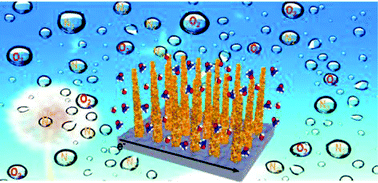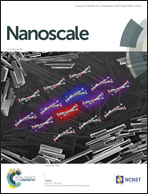Morphology and electronic structure modulation induced by fluorine doping in nickel-based heterostructures for robust bifunctional electrocatalysis†
Abstract
Fabrication of advanced electrocatalysts with high activity and durability is urgently needed to achieve energy conversion and pollution treatment at the same time. Herein, we highlight a fluorine-doped nickel-based heterostructure, in which fluorine doping displays a dual effect in Ni(OH)2 nanosheets/Ni3S2 heteronanorods. On the one hand, fluorine doping can facilitate the formation of Ni(OH)2 nanosheets/Ni3S2 heteronanorods through one-step in situ growth on nickel foams. The unique heterostructure enables good exposure of abundant active sites and highly active heterointerfaces. On the other hand, the uniform incorporation of fluorine can effectively modulate the electron density at the Fermi level of Ni3S2, contributing to the improved electrical conductivity and charge transfer efficiency, further improving the electrocatalytic activity in the oxygen evolution reaction (OER) and urea oxidation reaction (UOR). The optimal heterostructure presents a low overpotential of 360 mV to reach the OER current density of 100 mA cm−2. Finally, this heterostructure also displays a superior UOR anodic peak current of about 322.9 mA cm−2, almost the highest value at the anodic peak compared to the literature.



 Please wait while we load your content...
Please wait while we load your content...